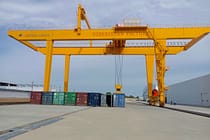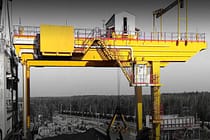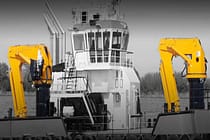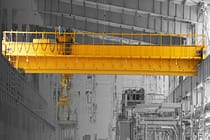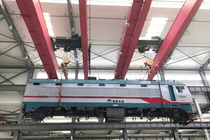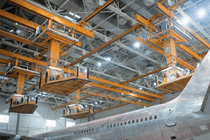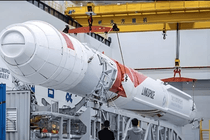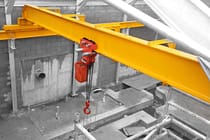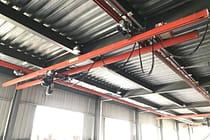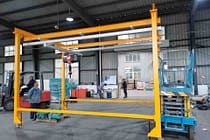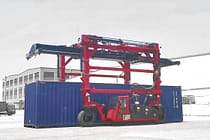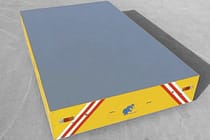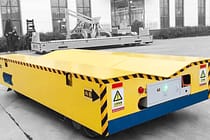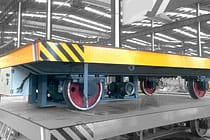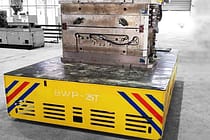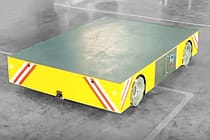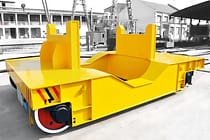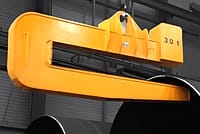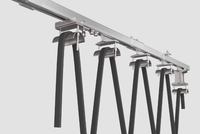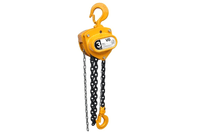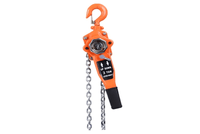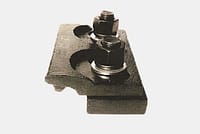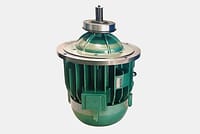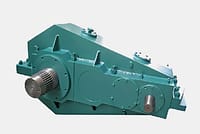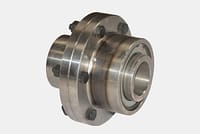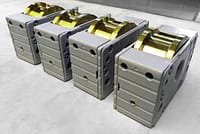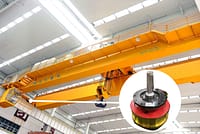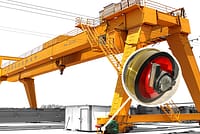What Is A Ladle Overhead Crane And How Is It Used In Foundry?
Ladle overhead cranes are an essential component of foundry operation. They are designed to handle molten metal and pour it into molds, furnaces, or other containers. In this article, we will explore what a ladle overhead crane is, how it works, and its applications in the foundry industry.
Overview Of Ladle Overhead Crane
A ladle overhead crane is a type of crane that is specifically designed to lift, transport, and pour molten metal from one container to another. It consists of a bridge, trolley, hoist mechanism, and a specialized ladle attachment.
According to the needs of users and the working conditions of the crane, ladle overhead cranes are generally divided into the double-girder single trolley, four-girder four-track double-trolley type, and for the casting bridge crane of extra-large tonnage, the four-girder six-track double trolley structure type is adopted.
The ladle EOT crane is mainly composed of the main trolley, the auxiliary trolley, the bridge structure, the trolley operating mechanism, the gantry hook group, and the electrical control. The fixed gantry hook group is suspended on the main trolley by the wire rope, and the distance between the two hooks is fixed to lift the ladle. The two trolleys can be operated independently to complete various lifting operations, and can also be used together to complete the ladle tipping, residual steel, and waste slag operations.

How Does A Ladle Overhead Crane Work?
The ladle overhead crane operates using a system of pulleys and cables. The crane itself is mounted on a gantry, which is a structure that spans the width of the work area and supports the crane’s movement. The gantry is typically made of steel and has wheels that run along rails on the ground.
Attached to the crane is a hoist, which is the mechanism that actually lifts and lowers the ladle. The hoist consists of a motor, a gearbox, and a drum that holds the cable. When the motor runs, it turns the gearbox, which in turn rotates the drum and winds or unwinds the cable.

One end of the cable is attached to the hoist, while the other end is attached to the ladle. When the hoist lifts the cable, the ladle lifts as well. Conversely, when the hoist lowers the cable, the ladle lowers too. By controlling the speed and direction of the hoist, the operator can move the ladle to different locations within the work area.
Of course, there’s more to it than just lifting and lowering the ladle. A ladle bridge crane also needs to be able to move laterally, or side to side. This is where the gantry comes in. By moving the entire crane along the length of the gantry, the operator can position the ladle precisely where it needs to be.
In addition, a ladle overhead crane needs to be able to rotate the ladle, so that it can pour its contents into molds or other containers. This is accomplished using yet another mechanism called a trolley. The trolley is a small cart that runs along a track attached to the underside of the crane. When the hoist lifts the ladle, the trolley moves horizontally along the track, allowing the ladle to swing from side to side.
All of these movements – lifting, lowering, lateral movement, and rotation – are controlled by an operator who sits in a cab attached to the crane. The cab is usually located near the hoist, and it provides the operator with a clear view of the work area. The operator uses a series of joysticks and buttons to control the various movements of the crane.
Applications Of Ladle Overhead Crane In Foundry
Ladle overhead cranes are used in various applications within the foundry industry, including:
Pouring Molten Metal
One of the primary applications of a ladle overhead crane in a foundry is pouring molten metal. The ladle crane is used to lift the ladle filled with molten metal and then transport it to the pouring station. At the pouring station, the crane operator will carefully control the movements of the crane to pour the molten metal into molds or other containers.
The process of pouring molten metal requires precision and accuracy. The ladle crane must be able to lift and transport the ladle without spilling any of the molten metal. This is a critical operation as spilling molten metal can cause serious injuries and damage to the equipment.
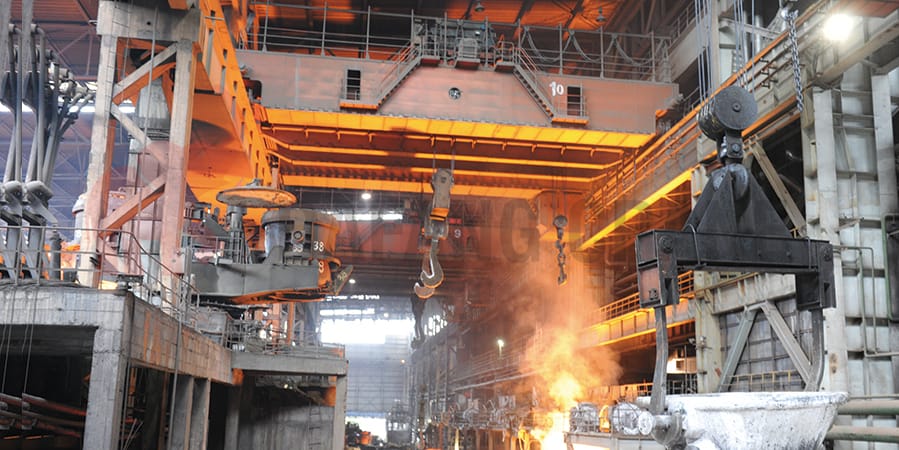
Transporting Molten Metal
Another important application of a ladle overhead crane in a foundry is transporting the molten metal. The crane is used to move the ladle from one location to another within the foundry. This is often necessary when the molten metal needs to be transported to a different area for casting or further processing.
As with pouring molten metal, the crane operator must ensure that the molten metal is not spilt during transportation. The ladle crane is designed to provide stable support to the ladle while it is being transported, even when the ladle is full of molten metal.
Maintenance And Repair Of Furnace
The ladle overhead crane can use for the maintenance and repair of the furnace in a foundry. The crane is used to lift and transport heavy equipment and components, such as crucibles and ladles, for cleaning and maintenance, also can be used to remove the old furnace parts and replace them with new ones.
The maintenance and repair of the furnace are critical to ensure that the foundry operates efficiently and safely. The ladle crane plays a crucial role in this process by providing the necessary lifting and transportation capabilities.
FAQs
- What materials are used to make ladle bridge cranes?
Ladle bridge cranes are typically made using high-quality steel components to withstand the high temperatures and harsh conditions of the foundry environment. - How does a ladle attachment work?
A ladle attachment is connected to the hoist mechanism, which lifts and lowers the ladle. The release mechanism on the ladle attachment is activated by the operator to pour the molten metal. - What safety features are incorporated into ladle EOT cranes?
Ladle EOT cranes come with various safety features, including overload protection, emergency stop button, and automatic limit switches. - Can ladle overhead cranes be customized to specific foundry requirements?
Yes, ladle overhead cranes can be customized to meet specific foundry requirements, such as load capacity, lifting height, and control system. - How do ladle EOT cranes improve productivity in the foundry?
Ladle EOT cranes provide efficient and safe handling of molten metal, minimizing wastage and reducing downtime due to accidents or equipment failure.
Send Your Inquiry
- Email: sales@hndfcrane.com
- WhatsApp: +86 191 3738 6654
- Telegram: +86 191 3738 6654
- Tel: +86-373-581 8299
- Fax: +86-373-215 7000
- Add: Changnao Industrial District, Xinxiang City, Henan Province, China
 WeChat
WeChat








